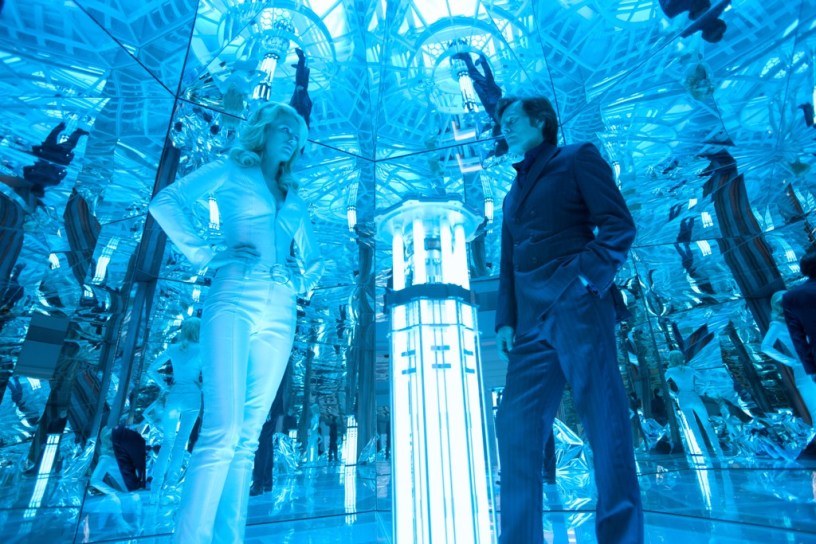LA-based VFX house Digital Domain is often the first choice for studios wanting to create digital doubles, thanks to its work in films such as The Curious Case of Benjamin Button (an old Brad Pitt) and Tron: Legacy (a young Jeff Bridges).
But turning actor Kevin Bacon into a mutant for X-Men: First Class presented bigger challenges than ever, according to the company’s visual effects supervisor Jay Barton.
The prequel is set in 1963, when Professor X and Magneto were young men and good friends, discovering their super human powers for the first time. Despite sharing a common goal – to save the world from being taken over by evil mutants – they fall out and the rest, as they say, is history.
Bacon plays Sebastian Shaw, the leader of the New York branch of the Hellfire Club, who is determined to rule the world. However, to the public, Shaw is known as a normal business man.
“Shaw's character is special because he has the ability to absorb kinetic energy and turn it into a weapon for his own benefit,” Barton says. “For example, if he is hit by a grenade or thousands of bullets, he soaks up the energy of these attacks and imparts the same amount of power back onto a person, just by the touch of his finger.
“For a scene like this, we were required to transform Kevin Bacon's normal human appearance into a mutant creation, as it absorbs the power of these weapons hitting him. In one scene, his face becomes distorted after an impact, until he ends up with two mouths, three noses and six eyes – just for a few seconds – as he soaks up the force.”
(Story continued below.)
Emma Frost (January Jones) and Sebastian Shaw (Kevin Bacon).
To achieve this look, Barton's team spent hours taking photographs of Bacon acting out multiple expressions from every angle on a number of different still cameras.
These were added to a digital image library, which also contained photographs of Bacon under different kinds of shades, textures and lighting. The models created from these images were then processed on a computer, pushed into different shapes and stretched as they reacted to outside influences, such as bullets and punches. The final results were then woven together as animations.
However, even with this massive library of photography available at their finger tips, Barton says there are still so many ways to fail.
“Even when you get every individual pore looking realistic on the digital model, there are still 10 more ways to go wrong until you find the final product that feels good and looks real. Things can go wrong with the rigging of the animation, plus the stitching together of the colouring, lighting and texturing.
“The rendering quality also might not be good enough, so we need an exceptionally skilled team in every phase of the pipeline. I wish I could say there is one secret to making the digital double look like a real person instead of one of Ray Harryhausen's stop-motion animations, but there isn't one.”
In total, Barton's team of 70 had only four months to make 100 realistic visual effect spots for the movie.
But the most difficult scene in the movie involved an epic fight scene between Magneto (played by Michael Fassbender) and Shaw, which involved creating more digital doubles.
The battle takes place on Shaw's nuclear submarine, which he uses to power himself up by sucking in energy from its nuclear reactor. The villains end up fighting inside an eight-sided mirrored room on this vessel, which was impossible to create practically. So everything inside the room had to be arranged digitally by Barton's team.
“When you shoot a room in principal photography covered with mirrors, you end up with hundreds, if not thousands of reflections of everybody in the room, including the crew. But you can't delete all of these irrelevant reflections in post-production. So the two actors were shot on a small, glowing blue floor, which was 15 foot in diameter and was completely surrounded with green screen.
“We filled in the gaps by creating all of the digital fighting action and the environment around them. This included the characters getting thrown around the room, shattering glass and breaking mirrors, which was all created digitally, together with the reflections in all of the mirrors.”
Barton dreams of the day a movie will feature a fully-realistic digital double as the central performer throughout the whole film. Although Hollywood is not ready for this yet, he believes work on characters like Shaw will slowly convince people to try this idea.
“I know it's a cliché when people say: 'Just imagine if we had Humphrey Bogart again as an actor to work on the scripts of today?' or: 'Think of how amazing it would be if you could create a completely synthetic made-up actor that tugs the right heart strings of viewers.'
“If we could create one digital character capable of this, who knows what else we could accomplish in the future. That would really change cinema forever.”
X-Men: First Class was released in cinemas on June 2 by Fox. This article was first published in IF Magazine's June-July issue #141.



